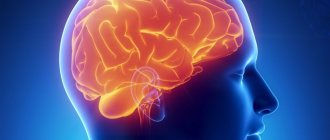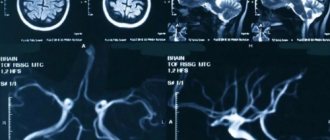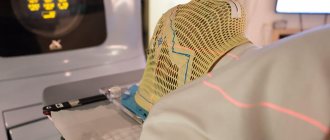General information about the disease
Asphyxia is diagnosed in 4-6% of children. Moreover, the percentage varies depending on the degree of prematurity of the fetus. In babies born before 36 weeks, the incidence of pathology reaches 9%, and in children born after 37 weeks it decreases to 1-2%.
Scientific definitions of newborn asphyxia boil down to the fact that the child cannot breathe independently or makes superficial convulsive breathing movements that do not allow the body to receive sufficient oxygen. The authors consider infant asphyxia as suffocation, in which other signs that the fetus is alive remain: there is a heartbeat, the umbilical cord is pulsating, the muscles are weak but contracting.
The reasons for the development of newborn asphyxia include a complex of risk factors that disrupt the blood circulation and respiratory functions of the fetus in the womb and during birth. The most common reasons include:
- conflict of Rh blood between mother and child;
- abnormal fetal development;
- pathologies of the nervous system in a baby;
- circulatory disorders, heart disease in the baby;
- intracranial injury that the baby received during the birth process;
- infections affecting the fetus in the womb (chlamydia, herpes, rubella, etc.);
- extragenital pathologies of the mother (thyrotoxicosis, anemia, diabetes mellitus);
- infectious diseases in the second and third trimesters;
- complicated childbirth;
- premature or post-term pregnancy;
- bad habits of the mother (effects of alcohol, nicotine, drugs on the body);
- malnutrition during pregnancySource: Asphyxia of newborns. Zhetpisova L.B. West Kazakhstan Medical Journal, 2011.
The most common cause of asphyxia is intrauterine hypoxia, that is, the baby lacks oxygen in the womb.
Whatever the causes of the pathological condition, it causes the same processes in the child:
- disrupts metabolism and blood circulation;
- thickens and increases blood viscosity;
- damage is caused to the brain, liver, heart, adrenal glands;
- organs swell, bleeding occurs;
- disruptions in the functioning of the central nervous system occur.
The longer the body feels a lack of oxygen, the more serious the degree of damage to tissues, organs and systems becomes.
Treatment of cerebral ischemia in newborns
The goal of treatment is to restore normal blood circulation in the brain tissue, prevent pathological changes and eliminate the consequences of ischemia. For stage 1 disease, treatment usually involves prescribing massage to improve blood circulation.
For diseases of the 2nd and 3rd degrees, drug therapy and surgery are used to remove a blood clot in the vessel and restore the structure of the vascular bed. In difficult cases, the baby undergoes a rehabilitation course of intensive therapy.
Main signs and symptoms
The most obvious diagnostic sign is respiratory distress. It is this that subsequently leads to disruption of the cardiovascular system, weakening of the child’s muscle tone and reflexes.
Clinical manifestations of moderate asphyxia:
- lethargy, weakness;
- decreased motor activity;
- weak reactions;
- depressed reflexes;
- low-emotional cry;
- tachycardia;
- arrhythmic breathing, sometimes with wheezing;
- the skin is bluish, but can quickly turn pink.
The child's condition is considered moderate. During the first 2-3 days of life, he is in a state of increased excitability, which can be replaced by a syndrome of depression, weakness, and lethargy. The condition manifests itself as small tremors of the arms and legs, disturbed sleep, and weak reflexes.
In severe asphyxia, the clinical picture includes:
- lack of cry at birth;
- reflexes are severely depressed or sharply reduced;
- the skin is bluish, pale, with a “marble pattern”;
- breathing is shallow, arrhythmic and periodically absent;
- wheezing is heard in the lungs;
- the heartbeat is weak, dull;
- convulsions.
If acute severe asphyxia is successfully overcome, breathing normalizes within 2-3 days and reflexes are restored. Source: Fetal hypoxia and asphyxia of the newborn. Kuznetsov P.A., Kozlov P.V. General Medicine, 2021. p. 9-15.
Causes of increased intracranial pressure or hydrocephalus may include:
- congenital abnormalities of brain development;
- perinatal infectious, hypoxic, traumatic processes;
- tumors;
- meningitis;
- injuries;
- hereditary metabolic and degenerative brain diseases, etc.
In any case, intracranial hypertension syndrome has similar clinical manifestations . This is a headache, mainly in the morning, without clear localization, bursting, intensifying in paroxysms, often accompanied by vomiting, not associated with food intake. The headache intensifies when coughing, sneezing, or straining. Additional symptoms: a feeling of “fog” before the eyes after being in a bent position, lethargy.
Types of newborn asphyxia
Classification is carried out according to several criteria. First of all, depending on the time of development of the pathological condition, the following are distinguished:
- primary, or intrauterine asphyxia - develops directly in the womb;
- secondary, or extrauterine asphyxia – occurs in the first hours of the baby’s life.
In turn, primary asphyxia is also divided into two subtypes:
- antenatal, or chronic - develops even before the onset of labor;
- intrapartum, or acute - occurs during the period of uterine dilation and fetal birth.
Risk factors
Various vascular and neurological pathologies, problems with blood pressure (especially hereditary) in the mother should alert the doctor who is managing the pregnancy. Also, risk factors for cerebral ischemia in a child are:
- mother's age is more than 35 years;
- endocrine diseases;
- premature, prolonged labor;
- multiple pregnancy;
- late toxicosis;
- failure of the mother to follow a healthy lifestyle;
- exacerbation of chronic or acute diseases in the mother during pregnancy.
Classification of asphyxia according to the Apgar scale
To assess the severity of asphyxia in a newborn, the Apgar scale is used. With its help, the doctor evaluates heart rate, breathing, muscle tone, skin color and reflexes, and then determines the severity of the pathological condition.
To give a rating, the doctor evaluates each of the five signs as 0, 1 or 2 points. Accordingly, the maximum and best score is 10 points. The assessment is determined taking into account the following criteria:
| Sign | 0 points | 1 point | 2 points |
| Pulse, beats per minute | No | Up to 100 | From 100 and above |
| Breath | No | Irregular, weak | Active, child screams and cries |
| Muscle tone | Arms and legs dangling | Weak flexion of arms and legs | Active movements |
| Reflexes | No | Weak | Present, well expressed |
| Color of the skin | Pale, cyanotic | Body – pink, arms and legs – bluish | Pink body, limbs |
The condition is assessed in the first and fifth minutes of life. Accordingly, the child receives two ratings: for example, 8/10. If the score is 7 or lower, the baby’s condition is assessed additionally at the 10th, 15th and 20th minutes.
Depending on the Apgar score, the degree of asphyxia is determined:
- 1-3 points – heavy;
- 4-5 points – average;
- 6-7 points – mild or moderate.
The Apgar score is not highly sensitive. Therefore, if a child has abnormalities, additional diagnostics are necessary to assess asphyxia.
Symptoms of the disease
At first, the symptoms of the disease may be quite mild. As intracranial pressure increases, the baby may appear lethargic, sleep constantly, and lose appetite. The eyes may appear puffy. Children sweat and their reflexes become much weaker. Because the child has headaches, he often cries, and sometimes has seizures.
As the disease begins to progress, fever appears, screaming and crying become stronger. The pupils dilate, the fontanel swells, and vomiting may occur. Sometimes the disease is only detected at this stage. Since it progresses quickly, you need to pay utmost attention to the child’s well-being and, if you have the slightest suspicion, immediately consult a doctor.
Diagnostics
Asphyxia can be diagnosed during gestation (primary, or intrauterine) by:
- monitoring of fetal heart rate, which is carried out during cardiotocography;
- analysis of motor activity, breathing and muscle tone of the fetus, which is carried out during ultrasound examination.
In case of secondary or extrauterine asphyxia, the diagnosis is made taking into account the presence of signs of a pathological condition, the external condition of the baby, the severity of the lack of oxygen and further tests that are carried out after completing the emergency care algorithm for the child.
For diagnosis use:
- Apgar score;
- a blood test from the scalp, vessels of the fetal umbilical cord, during which the oxygen tension, carbon dioxide tension and blood acidity are determined.
In some cases, an ultrasound examination of the brain is also prescribed, which determines how much the central nervous system is affected. The examination also makes it possible to distinguish hypoxic damage to the nervous system from traumatic one.
Causes
In the vast majority of cases, the causes of cerebral ischemia in newborns are various disorders of gestation in recent weeks, as well as non-standard situations during childbirth.
- Detachment of the placenta or disruption of blood flow in it.
- Compression of the umbilical cord, suffocation of the fetus.
- Congenital heart defects.
- Circulatory problems.
- Intrauterine hypoxia.
- Infection during childbirth.
- Openness of the ductus arteriosus.
- Acute placental insufficiency.
Treatment
Clinical recommendations for asphyxia include the provision of first aid to the newborn as a priority. This is the most important step, which, if carried out competently, reduces the severity of the consequences of the pathological condition and the risk of complications. The key goal of resuscitation measures for asphyxia is to achieve the highest possible Apgar score by 5-20 minutes of the newborn’s life.
The stages and principles of ABC resuscitation allow for consistent and effective resuscitation of a newborn born with asphyxia. Source: Carrying out therapeutic hypothermia in newborns born with asphyxia. K. B. Zhubanysheva, Z. D. Beisembaeva, R. A. Maykupova, T. Sh. Mustafazade. Science of Life and Health, 2021. p. 60-67:
- Principle A (“airway”) is to ensure a clear airway during the first stage of resuscitation. To do this, you need to create the correct position: tilt your head back, lower it 15 degrees. After this, suck out mucus and amniotic fluid from the nose, mouth, trachea, and lower respiratory tract.
- Principle B (“breath”) – create ventilation, provide breathing. To do this, a jet oxygen flow is created - artificial ventilation of the lungs is performed using a resuscitation bag. If the child does not cry, tactile stimulation is added: stroking along the back, patting the feet.
- Principle C (“cordial”) – restore heart function. Indirect cardiac massage helps with this. If necessary, adrenaline, glucose, hydrocortisone and other drugs are administered. In this case, the auxiliary ventilation from the previous stage cannot be stopped.
Care for a newborn child who has suffered asphyxia is carried out in a maternity hospital. Babies with a mild form are placed in a special tent with a high oxygen content. In cases of moderate or severe asphyxia, infants are placed in an incubator - a special box where oxygen is supplied. If necessary, the airways are re-cleaned and freed from mucus.
The scheme of further treatment, recovery and care is determined by the attending physician. General care recommendations include:
- maintaining normal body temperature, blood pressure, heart rate;
- creating maximum comfort: optimal ambient temperature, comfortable position;
- carrying out respiratory therapy;
- conducting infusion therapy - administering fluid to meet needs Source: Protocol for therapeutic hypothermia for children born with asphyxia. Ionov O.V., Balashova E.N., Kirtbaya A.R., Antonov A.G., Miroshnik E.V., Degtyarev D.N. Neonatology: News. Opinions. Training, 2014. p. 81-83.
During rehabilitation, regular monitoring :
- baby's weight (twice a day);
- neurological and somatic status;
- volume of fluid consumed;
- nutrition composition;
- basic vital signs: pulse, blood pressure, saturation, respiratory rate;
- laboratory characteristics of blood, urine;
- X-rays of the chest, abdominal cavity;
- ultrasound examination of the abdominal cavity;
- neurosonography;
- electrocardiograms, echocardiograms.
After discharge, the baby should be regularly monitored by a pediatrician or neurologist.
Recommendations from the neurocritical care society for the treatment of cerebral edema (2020).
Recommendations from the neurocritical care society for the treatment of cerebral edema (2020).
Cerebral edema is a nonspecific pathological edema that can result from any focal/diffuse cerebral damage. The simplest description is the accumulation of excess fluid in brain cells and/or extracellular space. Cerebral edema may be secondary to disruption of the blood-brain barrier, local inflammation, vascular lesions, or changes in cellular metabolism. Identification and treatment of cerebral edema is central to the management of critical intracranial pathology.
Treatment of cerebral edema in patients with subarachnoid hemorrhage (SAH).
Recommendations
1. We suggest using a bolus of hypertonic sodium saline (HSS) based on symptoms rather than a sodium target for the treatment of intracranial hypertension (ICH) or cerebral edema in patients with SAH (conditional recommendation, very low-quality evidence).
2. Due to insufficient evidence, we cannot recommend a specific dosing strategy for GRN to improve neurological outcomes in patients with SAH.
Treatment of cerebral edema in patients with traumatic brain injury.
Recommendations
1. We suggest the use of GRN over mannitol for the initial treatment of ICH or cerebral edema in patients with TBI (conditional recommendation, low-quality evidence).
2. We believe that the use of mannitol is an effective alternative for patients with TBI who cannot be prescribed GRN* (conditional recommendation, low-quality evidence). *Especially in cases of hypernatremia and volume overload.
3. In patients with TBI, we do not recommend the use of prehospital GRN to improve neurological outcomes (strong recommendation, moderate-quality evidence) and mannitol (conditional recommendation, very low-quality evidence).
The decision about which drug to use should be based on available resources, individual characteristics and local practice.
Treatment of cerebral edema in patients with acute ischemic stroke.
Recommendations
1. We suggest using GRN or mannitol for the initial treatment of ICH or cerebral edema in patients with acute ischemic stroke (conditional recommendation, low-quality evidence).
2. We suggest that clinicians consider using GRN to treat ICH or cerebral edema in patients with acute ischemic stroke who do not respond adequately to mannitol (conditional recommendation, low-quality evidence).
3. We do not recommend the use of prophylactic routine mannitol for acute ischemic stroke due to the potential for harm (conditional recommendation, low-quality evidence).
Treatment of cerebral edema in patients with intracerebral hemorrhage (ICH).
Recommendations
1. We suggest the use of GRN over mannitol for the initial treatment of ICH or cerebral edema in patients with ICH (conditional recommendation, very low-quality evidence).
2. We suggest bolus GRN based on symptoms or sodium target* for the treatment of ICH or cerebral edema in patients with ICH (conditional recommendation, very low-quality evidence). *target sodium level is 145–155 mmol/L.
3. We do not recommend the use of corticosteroids to improve neurological outcome in patients with ICH due to the potential for increased mortality and infectious complications (strong recommendation, moderate-quality evidence).
Treatment of cerebral edema in patients with bacterial meningitis.
Recommendations
1. We recommend dexamethasone 10 mg IV every 6 hours for 4 days to reduce neurological sequelae (primarily hearing loss) in patients with community-acquired bacterial meningitis (strong recommendation, moderate-quality evidence).
2. We suggest dexamethasone 0.15 mg/kg IV every 6 hours for 4 days as an alternative dose for patients with low body weight or a high risk of side effects from corticosteroids (Good Clinical Practice Statement).
3. We recommend administering dexamethasone before or with the first dose of antibiotic in patients with bacterial meningitis (strong recommendation, moderate-quality evidence).
4. We recommend the use of corticosteroids to reduce mortality in patients with tuberculous meningitis (strong recommendation, moderate-quality evidence).
5. We suggest treatment with corticosteroids for two or more weeks in patients with tuberculous meningitis (conditional recommendation, low-quality evidence).
6. There is insufficient evidence to determine whether GRN or mannitol is more effective in reducing ICH or cerebral edema in patients with community-acquired bacterial meningitis.
Treatment of cerebral edema in patients with hepatic encephalopathy.
Recommendations
1. We suggest using GRN or mannitol for the treatment of ICH or cerebral edema in patients with hepatic encephalopathy (conditional recommendation, very low-quality evidence).
2. There is insufficient evidence to determine whether hyperosmolar therapy or ammonia-lowering therapy improves neurological outcomes in patients with hepatic encephalopathy.
Recommendations for assessing the risk of acute kidney injury (AKI) after use of mannitol and GRN.
1. We suggest using the osmolar gap instead of the serum osmolarity threshold during mannitol treatment to control the risk of AKI (conditional recommendation, very low-quality evidence).
2. Renal function tests should be closely monitored in patients receiving mannitol or GRN due to the risk of AKI with hyperosmolar therapy (Good Clinical Practice Statement).
3. We suggest that severe hypernatremia and hyperchloremia* should be avoided during treatment for GRN due to their association with AKI (conditional recommendation, low-quality evidence). *upper limit of sodium 155–160 mEq/L and serum chloride 110–115 mEq/L may be reasonable to reduce the risk of AKI (conditional recommendation, very low-quality evidence).
Therefore, clinicians should closely monitor renal function, electrolytes, and acid-base balance when using hyperosmolar therapy.
Recommendations for the optimal method of GRN administration
1. There is insufficient evidence to support the use of continuous infusion of GRN directed at a target serum sodium level to improve neurological outcomes.
2. Due to insufficient evidence, we cannot recommend specific dosing strategies for GRN to improve neurological outcomes in patients with cerebral edema.
3. Clinicians should avoid hyponatremia in patients with severe neurological damage due to the risk of exacerbation of cerebral edema (Good Clinical Practice Statement).
Non-drug treatment of cerebral edema and ICH
Recommendations
1. We suggest raising the head of the bed 30 degrees (no more than 45 degrees) as a useful adjunct for reducing intracranial pressure (conditional recommendation, very low-quality evidence).
2. We recommend brief episodes of hyperventilation for patients with acute ICH (strong recommendation, very low-quality evidence).
3. We suggest that CSF drainage be considered as a useful adjunct for reducing ICH (conditional recommendation, very low-quality evidence).
Other nonpharmacologic treatments such as surgical decompression and therapeutic hypothermia were not included in the recommendations because they are adequately discussed in other guidelines.
Source citation: Cook AM, Morgan Jones G, Hawryluk GWJ, et al. Guidelines for the Acute Treatment of Cerebral Edema in Neurocritical Care Patients. Neurocrit Care. 2020; 32(3): 647–666.doi: 10.1007/s12028–020–00959–7
Consequences and complications
The pathology is quite dangerous and is one of the most common causes of child mortality. How favorable the prognosis will be depends on the severity of the baby’s condition and the Apgar indicator. If the score increases, the prognosis is considered favorableSource: Modern methods of treating neonatal asphyxia. Cherednikova E.N., Sherstnev D.G. Bulletin of Medical Internet Conferences, 2021. p.824.
However, with severe pathology, serious complications develop during the first year of life. Early consequences that may appear in the first few days after resuscitation include :
- respiratory arrest (the most common and dangerous complication);
- pulse failure;
- convulsions;
- cerebral edema;
- disruption of the urinary and digestive systems.
Later disorders include the following diagnoses:
- syndrome of increased excitability (hyperexcitability);
- increased intracerebral pressure (hypertension syndrome);
- lesions of the central nervous system (perinatal encephalopathy);
- disruptions in the functioning of the endocrine and vegetative-vascular systems (hypothalamic disorders).
With timely and competent medical intervention, as well as a high-quality recovery period, asphyxia of newborns may not have dangerous consequences in the future. Mild forms of asphyxia have almost no effect on the child; after the illness, his further development will proceed in the same way as in other babies.
Prevention of newborn asphyxia
The expectant mother should be involved in the prevention of the pathological condition during pregnancy. To do this you should:
- attend routine gynecological consultations;
- adhere to the recommendations of the obstetrician-gynecologist;
- be sure to take vitamin complexes if prescribed by a doctor;
- monitor the condition of the fetus and placenta during routine ultrasound examinations;
- treat any diseases only under the supervision of a doctor, do not self-medicate;
- follow a daily routine, do not overload the body;
- get rid of bad habits;
- to walk outside.
In obstetrics, considerable attention is paid to the development of effective preventive methods that can reduce the risk of asphyxia during childbirth and during the first days of a baby’s life.
Sources:
- Modern methods of treating newborn asphyxia. Cherednikova E.N., Sherstnev D.G. Bulletin of Medical Internet Conferences, 2016. p.824
- Protocol for therapeutic hypothermia for children born with asphyxia. Ionov O.V., Balashova E.N., Kirtbaya A.R., Antonov A.G., Miroshnik E.V., Degtyarev D.N. Neonatology: News. Opinions. Training, 2014. p. 81-83
- Carrying out therapeutic hypothermia in newborns born with asphyxia. K. B. Zhubanysheva, Z. D. Beisembaeva, R. A. Maykupova, T. Sh. Mustafazade. Science of Life and Health, 2021. p. 60-67
- Asphyxia of newborns. Zhetpisova L.B. West Kazakhstan Medical Journal, 2011
- Fetal hypoxia and asphyxia of the newborn. Kuznetsov P.A., Kozlov P.V. General Medicine, 2021. p. 9-15
The information in this article is provided for reference purposes and does not replace advice from a qualified professional. Don't self-medicate! At the first signs of illness, you should consult a doctor.
Prices
| Name of service (price list incomplete) | Price |
| Online opinion of a pediatrician (SPECIAL) | 0 rub. |
| Appointment (examination, consultation) with a pediatrician, primary, therapeutic and diagnostic, outpatient | 1750 rub. |
| Consultation (interpretation) with analyzes from third parties | 2250 rub. |
| Prescription of treatment regimen (for up to 1 month) | 1800 rub. |
| Consultation with a candidate of medical sciences | 2500 rub. |







